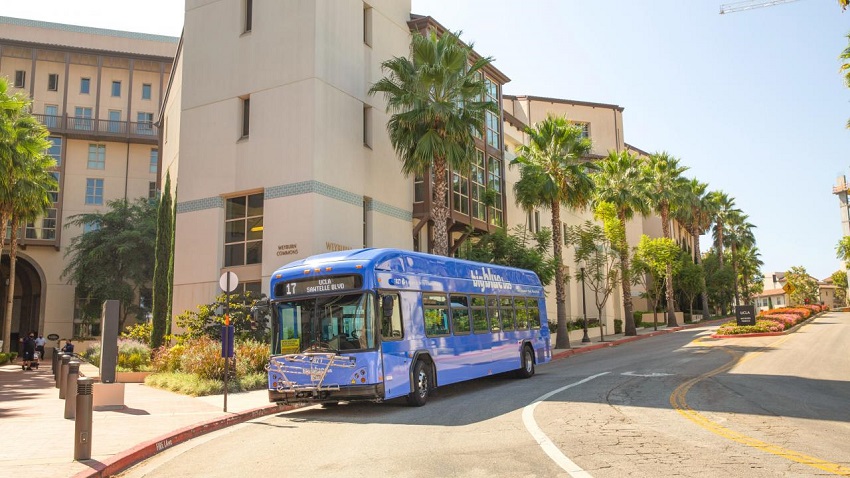Mass transportation, also known as public transportation, plays a vital role in connecting communities and reducing traffic congestion. It offers a convenient and cost-effective means of transportation for individuals and is often considered an environmentally friendly alternative to private vehicles. However, like any system, mass transportation has its disadvantages. In this article, we will explore some of the drawbacks associated with mass transportation and examine how they can impact individuals and communities.
Mass transportation refers to the movement of people in large numbers using various modes of public transportation such as buses, trains, trams, subways, and ferries. It aims to provide an efficient and affordable means of travel, especially in densely populated urban areas. While mass transportation offers numerous benefits, it is essential to consider the drawbacks associated with this mode of transportation.
Disadvantage 1: Limited Flexibility and Schedule Constraints
One of the primary disadvantages of mass transportation is the limited flexibility it offers to commuters. Unlike private vehicles, which allow individuals to travel according to their preferred routes and schedules, mass transportation operates on fixed routes and timetables. This lack of flexibility can be inconvenient for those who have unpredictable work or personal commitments.
Disadvantage 2: Overcrowding and Lack of Personal Space
Another significant disadvantage of mass transportation is the issue of overcrowding. During peak hours, buses, trains, and other modes of public transportation can become extremely crowded, leaving commuters with limited personal space. The lack of personal space can lead to discomfort and a higher risk of spreading diseases. Additionally, overcrowding can increase the likelihood of conflicts and security concerns.
Disadvantage 3: Reliability Issues and Delays
Mass transportation systems are susceptible to various factors that can cause delays and affect their reliability. Factors such as technical malfunctions, accidents, or severe weather conditions can disrupt the regular operations of buses, trains, or subways. Delays in mass transportation services can be frustrating for commuters who rely on punctuality for work, appointments, or other commitments.
Disadvantage 4: Safety Concerns and Security Issues
Safety concerns and security issues are inherent disadvantages of mass transportation. While efforts are made to ensure the safety of passengers, incidents such as theft, harassment, or even accidents can occur. The presence of large crowds in confined spaces can create an environment where such incidents are more likely to happen. Ensuring the safety and security of passengers should always be a priority for mass transportation providers.
Disadvantage 5: Accessibility Challenges for Certain Groups
Mass transportation systems may present accessibility challenges for individuals with disabilities, the elderly, or those with limited mobility. Not all stations, buses, or trains are equipped with facilities such as ramps or elevators, making it difficult for certain groups to access these modes of transportation. Lack of accessibility can lead to social exclusion and restrict mobility options for those most need them.
Disadvantage 6: Dependency on Infrastructure and Service Providers
Mass transportation relies heavily on infrastructure and service providers to operate efficiently. Any disruption or maintenance work on the infrastructure, such as roads or tracks, can significantly impact the availability and reliability of public transportation. Similarly, the financial stability and management of service providers can influence the quality of services offered to commuters.
Disadvantage 7: Maintenance and Upkeep Costs
Maintaining and operating mass transportation systems involves significant costs. Regular maintenance of vehicles, infrastructure, and facilities is essential to ensure the safety and efficiency of public transportation. Governments or transit authorities often bear these costs and can result in increased taxes or fares for commuters. Balancing the financial aspects while providing affordable transportation is a challenge many mass transportation systems face.
Disadvantage 8: Limited Route Coverage and Inconvenience
While mass transportation networks strive to provide extensive coverage, there can still be limitations in terms of routes and connectivity. Some areas, particularly in suburban or rural regions, may have limited or no access to mass transportation, making it inconvenient for individuals living in those areas. This limited coverage can result in longer commuting times and increased reliance on private vehicles.
Disadvantage 9: Lack of Privacy and Noise Levels
Public transportation is a shared space where individuals travel together. This lack of privacy can be a disadvantage for those who value personal space or need a quiet environment. Noise levels in buses, trains, or trams can be disruptive and affect the overall comfort of passengers. However, advancements in technology and design are continuously being made to address these concerns and improve the overall passenger experience.
Disadvantage 10: Impact on Local Businesses and Economy
The development of mass transportation systems, particularly in urban areas, often involves extensive construction and infrastructure projects. These projects can disrupt the normal flow of traffic, inconveniencing businesses in the vicinity. Temporary road closures or reduced accessibility can result in a decline in customer traffic and revenue for local businesses. However, it is important to note that the long-term benefits of improved transportation infrastructure can outweigh these temporary inconveniences.
Disadvantage 11: Environmental Considerations
While mass transportation is generally considered more environmentally friendly than individual car usage, it still has certain environmental considerations. Mass transportation systems contribute to air pollution, particularly in congested urban areas where buses and vehicles emit pollutants. Additionally, the construction and maintenance of transportation infrastructure can have environmental impacts such as habitat disruption and resource consumption.
Disadvantage 12: Limited Personalization and Customization
Mass transportation systems are designed to cater to a large number of people, resulting in limited personalization and customization options. Unlike private vehicles where individuals have control over the temperature, seating arrangement, and entertainment options, mass transportation often provides a standardized experience. This lack of personalization can be a drawback for those who value individual preferences and comfort.
Disadvantage 13: Potential for Spread of Diseases
In densely packed spaces like buses or trains, the potential for the spread of diseases is a significant concern. Close contact with other commuters increases the risk of transmitting infectious illnesses, especially during flu seasons or pandemics. Public transportation authorities must take appropriate measures to promote hygiene, such as regular cleaning and providing hand sanitizers, to minimize the risk of disease transmission.
Disadvantage 14: Impact on Mental Health and Well-being
The daily commute on mass transportation can have an impact on mental health and well-being. Factors such as overcrowding, delays, or unpleasant experiences can contribute to commuters’ stress, anxiety, and frustration. Long commuting times can also result in fatigue and reduced quality of life. Mass transportation providers must prioritize passenger comfort and well-being to ensure a positive commuting experience.
Disadvantage 15: Loss of Productivity and Time
The time spent on public transportation can be considered unproductive for individuals who need to work or engage in other activities. Commuters may face limitations in terms of space, noise levels, or lack of necessary resources to be productive during their journey. This loss of productivity and time can significantly disadvantage those with busy schedules or specific work requirements.
Conclusion
While mass transportation offers numerous benefits, such as reducing traffic congestion and promoting sustainable mobility, it is important to recognize its disadvantages. Limited flexibility, overcrowding, reliability issues, safety concerns, and accessibility challenges are some drawbacks of public transportation. However, with proper planning, infrastructure improvements, and effective management, many of these challenges can be mitigated or minimized, allowing mass transportation to continue serving as a crucial component of modern urban mobility.




